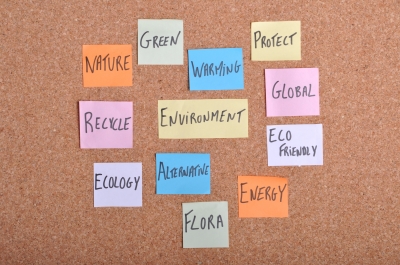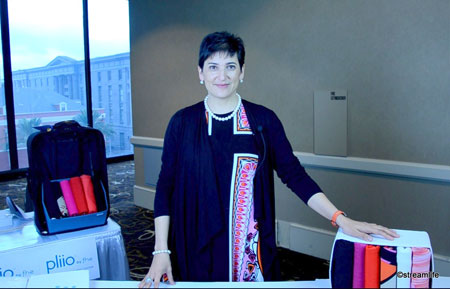Helping Your Clients to Move Forward
This page may contain links to Amazon.com or other sites from which I may receive commission on purchases you make after clicking on such links. Read my full Disclosure Policy

As my guest blogger this week, I’m happy to welcome Samantha Pointer, a regular contributor to the Professional Organizers Blog Carnival. Samantha attended the recent NAPO Conference, and is here today to share the highlights of the opening keynote address by Dr. David Tolin.

This year I had the opportunity to attend the National Association of Professional Organizers (NAPO) 2013 Annual Conference in New Orleans, LA. I had a great time and loved seeing my fellow organizers from around the world.
I wanted to share with you some of my takeaways from the opening keynote by David Tolin, Ph.D. about Unmask the Potential in Your Clients: Helping Mainstream Clients Get Unstuck. Dr. Tolin wasn’t just addressing how to get unstuck for our clients as professionals, but what he shared also was a help for getting anyone unstuck.
Here are a few of the things that stuck out to me during the talk that I wrote down in my notes.
Dr. Tolin explained that there is a range of “stuckness” and depending on where you are you can implement some of the tools that he suggests. His main focuses were motivation and having a plan. Dr. Tolin explained that most clients come to us in different stages of motivation. These stages are:
- precontemplation
- contemplation
- action
- maintenance
Different clients are at different stages at different times. By knowing what stage the person is in on the motivation scale we can adjust our approach to meet them where they are at. Matching what we do to that stage of change will help get the client unstuck.
Dr. Tolin shared how we can provide support at each stage of change for the client. A big nugget I took away about the precontemplation stage is even if a client calls you and tells you they are ready, they still may not be ready.
Motivational Interviewing: ACE
Dr. Tolin talked about the spirit of motivational interviewing: ACE, which stands for Autonomy, Collaboration, and Evocation.
- Autonomy: we shift the responsibility of change to the client. This is a big shift for professionals because we are used to thinking what we say goes. When we shift the responsibility to the client they are free to take our advice or not.
- Collaboration: As the professional we are not to be a domineering authoritarian. We are there to create a positive atmosphere that is conducive to change. Clients don’t like when you force change.
- Evocation: In evocation as the professional our role is to pull out of our client wisdom, insight and advice and help them get a plan.
The big takeaway is that you just can’t be a motivator. You need to have a plan. And Dr. Tolin had really great insights on coming up with a plan that can help you or your client to get unstuck, no matter what stage they are in.
The funniest part of the keynote was when Dr. Tolin was describing the different categories of time wasters. They are:
- The Crisis Manager
- The Undisciplined Procrastinator – mismatching tasks to energy.
- The Easily Distracted
- The Perfectionist Micromanager
- The Systematically Inefficient – only as efficient as the system they are working in.
- The Non-Communicator
- The Impulsive Wanderer – needs to slow down and process.
I am sure that everyone can find themselves in one of these categories.
Various nuggets from the Keynote:
- To get unstuck we have to make meaningful goals.
- Saying no. We have been taught that saying no is disrespectful but in truth when we don’t say no to certain things we are valuing other people’s time more than ours. We really need to help our clients and ourselves with this.
- Helping our clients brainstorm solutions – we need to not only make them use specific words for their solution, but we need to help them implement the solution and then follow up to see what happened and ask them if it worked.
- Decision making – we need to pose challenging questions to our clients, but have them internalize it. As professionals we get it started outwardly and provide structure externally, but help the client internalize the questions so that the client eventually can do it themselves and it will be a normal part of their thought process.
- Exposure therapy – You can face your emotion head on and build up your stamina to handle those emotions.
- Sometimes people get stuck because they are not doing what they really want. To combat this you need to brainstorm what would make things fun. You need to follow your passion. Revisit what interested you between the ages of 7 and 14.
- These strategies can help with any client – even those that don’t get stuck.
It was a great presentation and I took away a lot that even I can’t express fully in just one article. I hope that some of the insights shared by Dr. Tolin can help you to get your clients unstuck.



